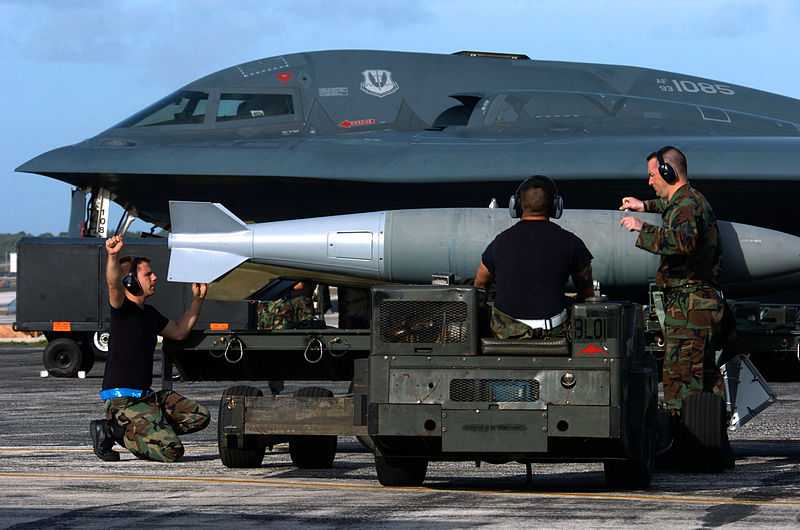
An Increasing Need for a New Bomber
The bomber force in the nuclear triad is in need of modernization. With the B-52 becoming too obsolete to fulfill its nuclear mission and the B-2 becoming too visible to modern air detection systems for penetration missions, the US’ deterrence is undermined. This vulnerability, which weakens the deterrent value of the triad, decreases the threatened costs an adversary expects to suffer from a second strike. Thus, the current bombers’ successor should obtain the versatile and stealth qualities of both aircraft.
The Vulnerable Leg
In the event of an attack, high-alert ICBMs are capable of launching quickly with little notice before being destroyed, and SSBNs are capable of remaining hidden in order to ensure a second strike capability. For the bombers, this is simply not the case. The time for taking-off and leaving the vicinity of a nuclear blast is longer than an ICBM travel time. With missiles being accurate of up to 600 feet and capable of hitting that target in less than thirty minutes, the bomber force is seen as the most vulnerable leg of the triad.
Adding to this vulnerability is the lack of standoff capabilities. Even when armed with an Air Launched Cruise Missile (ALCM), both aircraft will have to be within proximity of the target or must penetrate enemy air defenses to deliver their weapons. Both the SSBN and the ICBM are capable of striking their targets from a safe distance, allowing them to serve as a first and second strike vehicle. Bombers, though, must be within proximity of their targets and may have to penetrate enemy airspace to delivery their weapons, a mission that neither the ALCM nor the bombers are capable of performing in their given state.
The Amputated Leg
The ability of the current bomber force to perform future nuclear missions and overcome emerging challenges is regarded by many in the Air Force as too costly. As a result, the need for a new strategic bomber is seen as critical to supporting the deterrent effect of the full triad. Given the growing costs of continuously upgrading the bomber force to perform future nuclear missions and overcome emerging challenges, the Department of Defense awarded Northrop Grumman a contract to build the new Long Range Strike Bomber (LRS-B) that would perform, at first, conventional, then later, nuclear missions. But until the LRS-B is certified to carry nuclear weapons, the United States will have to rely on its aging B-52 and B-2 bombers to perform such missions. Additionally, given the limitations imposed by the New START treaty, the current force of 76 planes may not be capable of overcoming enemy defenses. This raises questions about the need for all three legs of the triad, but also demonstrates that if the bomber force is to remain effective as a deterrent, an entirely new bomber is needed to replace the existing ones.
The Prosthetic Leg
To date, the development of the LRS-B by Northrop Grumman is headed in the right direction for replacing the ageing bomber force. The future B-21 is predicted to have a similar design as the B-2 bomber to avoid low-frequency radar detections and have the same open systems architecture as the B-52 to increase integration of new technology. Furthermore, the long range bomber may be equipped with two military engines capable of producing close to 70,000 lbs of thrust thus allowing it to quickly escape nuclear detonation if Minimum Interval Takeoff procedures are applied
With these developments in survivability and penetration capabilities, the LRS-B appears to be the Air Force’s solution to maintaining the effectiveness of the triad. Since the bomber serves as an important tool for crisis management, their flexibility, responsiveness, and signaling ability reduces the room for error by allowing more time for decision making. Furthermore, their lurking and stealth capabilities make them a more valuable second strike vehicle since it can operate in hostile areas without harassment for longer periods of time. With these advances in technology, the bomber leg of the triad will become reinvigorated to meet the increasing demands of the United States’ nuclear deterrence in a period when having flexibility in nuclear response is desirable.





